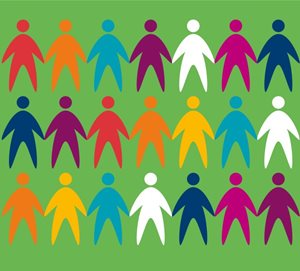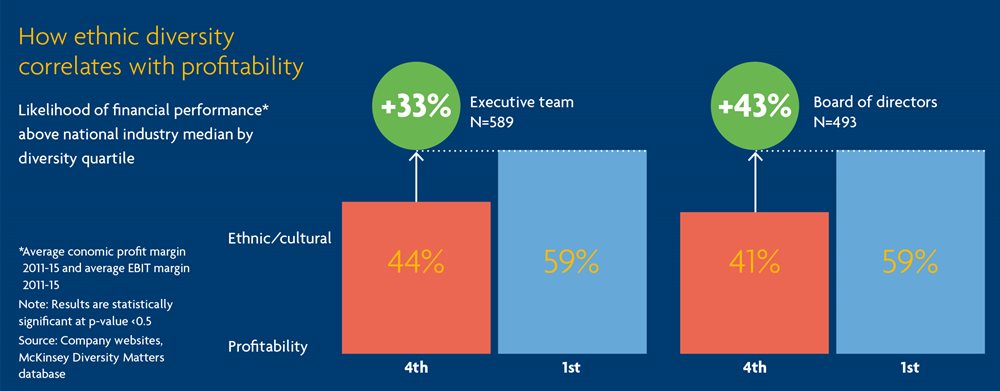NEWS
Wednesday 4 March 2020
Employee benefits (EB) wouldn’t necessarily be the first thing people think of when aiming to improve inclusion and diversity in the workplace. Instead, the first thoughts of business leaders and HR departments looking to provide equal opportunities for all employees, are likely to be around recruitment policies, equal pay, and educating employees about unconscious bias – stereotypes we have in our minds that are unintentional but influence behaviour.
But employee benefits, both traditional insured and lifestyle benefits, can play a vital role in making all workers feel valued and creating a culture where everyone can thrive, no matter their background.
 With International Women’s Day (IWD) fast approaching, and the many interesting discussions that will result from that, it seems the perfect time to be looking at the issue of inclusion and diversity in the workplace and the role employee benefits can play in helping to create an all-inclusive culture. Yet, inclusion and diversity in the workplace is obviously about more than gender. Employers also need to consider ethnicity, disability, sexuality, educational background, age (with up to five generations in the workforce these days, it’s an increasingly important issue) and more when planning what employee benefits they can offer to their workforce.
With International Women’s Day (IWD) fast approaching, and the many interesting discussions that will result from that, it seems the perfect time to be looking at the issue of inclusion and diversity in the workplace and the role employee benefits can play in helping to create an all-inclusive culture. Yet, inclusion and diversity in the workplace is obviously about more than gender. Employers also need to consider ethnicity, disability, sexuality, educational background, age (with up to five generations in the workforce these days, it’s an increasingly important issue) and more when planning what employee benefits they can offer to their workforce.
…employee benefits, both traditional insured and lifestyle benefits, can play a vital role in making all workers feel valued and creating a culture where everyone can thrive…
Defining inclusion and diversity
Before we can really consider how employee benefits can help create an inclusive and diverse workplace, we need to understand what the terms actually mean and how they differ.
Inclusion – is defined as: “the achievement of a work environment in which all individuals are treated fairly and respectfully, have equal access to opportunities and resources, and can contribute fully to the organization’s success.”1
Diversity – is “the collective mixture of differences and similarities that include, for example, individual and organizational characteristics, values, beliefs, experiences, backgrounds, preferences, and behaviours.” It can be broken down into two categories – visible diversity traits and invisible diversity traits.
- Visible traits include race, gender, physical abilities, age and body type.
- Invisible diversity traits include sexual orientation, religion, socio-economic status,education and parental status.1
Leading with inclusion
Head of Inclusion and Diversity at Sanofi, Wema Hoover, speaking at our Women at Work event in 2019, explained why her organisation decided to lead with inclusion, rather than diversity in the department’s name and in its communication with employees: “I realised I was never going to get a common definition of diversity as it is personal and depends on a person’s background, experience and who they’ve been exposed to and their cultural awareness. We lead with inclusion because it is easier to define for most and if you create an inclusive work environment, all forms of diversity will rise not just gender diversity.”2
“We lead with inclusion because it is easier to define for most and if you create an inclusive work environment, all forms of diversity will rise…”
Why is inclusion and diversity so important?
Aside from just being the right thing to do, there’s also plenty of business benefits to be gained from having a culture that helps everyone thrive. McKinsey says gender diversity in management positions improves profitability. Companies in the top 25 percent for gender diversity on their executive teams were 21% more likely to experience above-average profits.
Companies with more culturally and ethnically diverse executive teams were 33% more likely to see better-than-average profits. An inclusive workplace that understands the needs of their employees, making them feel valued, also has a positive impact on employee retention. Organisations that promote values of inclusion and have a diverse workforce also tend to appeal to a wider customer and supplier base.1
Companies with more culturally and ethnically diverse executive teams were 33% more likely to see better-than-average profits.

Despite the clear business benefits and great strides being made in many areas, there are still a high number of inclusion and diversity issues to tackle in the workplace.
Let’s look at gender inequality first. In spite of huge advances, according to one survey, it will still take 257 years for men and women to have pay equality4 – that’s quite staggering when you think about it. That’s the year 2277!
And while there has been a 2% increase in the number of women in senior roles – which is clearly a positive – the involvement of women in the labour market is actually stalling and financial disparities are growing. Not such good news.
 Women are also still more likely to experience health-related discrimination at work than men, with almost half of female employees experiencing these problems in their current job, and perhaps somewhat surprisingly, 37% of men. In countries including Mexico, Brazil, Canada and the UK more than half of women have been a victim of health-related discrimination.5 There’s clearly still some way to go.
Women are also still more likely to experience health-related discrimination at work than men, with almost half of female employees experiencing these problems in their current job, and perhaps somewhat surprisingly, 37% of men. In countries including Mexico, Brazil, Canada and the UK more than half of women have been a victim of health-related discrimination.5 There’s clearly still some way to go.

This links to another key issue when thinking about workplace inequality: occupational segregation. This is an unequal distribution of people based on factors such as gender and race across different jobs and ultimately leading to benefits disparity.
Occupational segregation can result in issues such as a lack of access to affordable healthcare, paid time off and family leave. In the United States, Tom Shapiro, Director of the Institute on Assets and Social Policy (IASP) at Brandeis University highlights “Occupational segregation doesn’t just engender unequal paychecks for African American and Latino workers, it also generates inequality in other forms of compensation, such as benefits, and robs these workers of wealth-accumulating opportunities.”6
And that of course is assuming you can get a job in the first place – one that offers benefits. 20% of LGBTQ Americans have experienced discrimination based on sexual orientation or gender identity when applying for jobs7 and 36% of Americans felt that their age had prevented them from getting a job since turning 40.8
So, what role can EB play in helping to solve some of these issues?
As we move away from traditional benefits packages to the far greater flexibility suitable for today’s diverse employees, building an EB offering that helps to cater for the needs and wants of all is now more possible than ever. By providing a mix of traditional employee benefits, lifestyle benefits and workplace perks and policies, employers can create a plan that really suits everyone no matter their background.
 Traditional employee benefits – tend to be protection products that make up a standard employee benefits package, including insured benefits like life, medical and disability, and long-term savings plans like a company pension.
Traditional employee benefits – tend to be protection products that make up a standard employee benefits package, including insured benefits like life, medical and disability, and long-term savings plans like a company pension.
 Lifestyle benefits – schemes where employees use salary sacrifice or benefits allowances to finance an employee benefit that enhances their own lifestyle or life outside of the workplace. Examples of this might include childcare vouchers, discount gym memberships, student loan repayments or enhanced medical plans that cover things like fertility treatments.9
Lifestyle benefits – schemes where employees use salary sacrifice or benefits allowances to finance an employee benefit that enhances their own lifestyle or life outside of the workplace. Examples of this might include childcare vouchers, discount gym memberships, student loan repayments or enhanced medical plans that cover things like fertility treatments.9
 Workplace perks – policies or incentives that enhance the workplace or company culture and are available to all employees in an office, such as unlimited holiday, flexible working, sports and social clubs, family care leave, discounted shopping portals and more.9
Workplace perks – policies or incentives that enhance the workplace or company culture and are available to all employees in an office, such as unlimited holiday, flexible working, sports and social clubs, family care leave, discounted shopping portals and more.9
And employers are able offer flexible benefits packages like this thanks to innovative cloud-based digital EB platforms. Through these, employees can choose the combination of benefits that are right for them, related to their age, gender, sexuality or lifestyle or any other factor that is important.
Of course, traditional insured benefits still have a very significant role to play in building any EB package, no matter how flexible this might be. Medical benefits offer one of the best ways to ensure you are meeting the diverse needs of your employees and forward-thinking employers are really working hard at this.
Many are providing options that ten years ago would not have been considered, in order to be more inclusive and diverse. Whether as part of a standard package or by giving employees the option to “top-up” with salary sacrifice, these options now often include mental health, fertility and transgender coverage. Some commentators in the LGBT+ community have argued that fertility benefits are also essential if an employer wants to be truly inclusive.10
In the UK, Lloyds Bank offers employees access to private gender reassignment surgery, which provides quicker access to treatment than through the National Health Service. Karin Cook, Director of Operations at Lloyds Banking Group: “We want to be inclusive to all colleagues and we felt that our current healthcare provision was excluding certain conditions which were very important to people, particularly in the support for some of the mental health issues that colleagues suffer. So it was essential that we were able to extend that to cover to people with gender dysphoria.”11
Some commentators in the LGBT+ community have argued that fertility benefits are also essential if an employer wants to be truly inclusive .
If an employer truly wants to end health-related discrimination then offering the broadest possible set of medical coverage options, communicating them often and effectively, ensuring they become the new normal, is surely the way to go.
And how can lifestyle benefits like student loan repayments, increased pension contributions and childcare vouchers be used to help with inclusion and diversity? Put simply, they offer employees greater choice and flexibility at whatever stage in their life they are – they enable people to share their benefits packages for their current needs and wants – ensuring inclusion at all stages of their career.
Employers can also ensure that their workplace perks and policies are designed to support non-traditional family structures, for example supporting employees in a gay relationship when adopting a child. The organisation can offer couples the chance to decide which partner takes the role of the primary ‘adopter’ and is entitled to enhanced benefits while the other parent receives standard ‘paternity leave’.
Some employers group all types of leave – maternity, paternity, for children and elderly relatives – under the term ‘family care leave’. This allows flexible working (by both location and shift pattern) and can play an important part in creating a workplace that’s fit for everyone and truly inclusive.
Things to consider as a multinational employer
While this is by no means an exhaustive list, here are four things you might want to consider when looking to create a more inclusive workplace through your employee benefits.
Review your current benefits strategy – are the benefits in place really inclusive and designed to support a diverse employee base? Do your benefits plans work for both traditional and non-traditional family structures? Young and old? Men and women? Review what you have in place to see what might need changing and updating.
Poll employees – a well worded employee survey can help you gain insight into what benefits your staff currently value most and if there is something they want that is missing from your EB offering. Be aware, you will then need to fix the problem!
Communicate effectively – ensure your communications appeal to all employees. For example, do posters promoting fertility support only show pictures of women? How might men and transgender employees feel about this? Consider carefully what wording and imagery you use in your communications strategies and make sure you appeal to everyone. There’s little point making your benefits truly inclusive if you’re not able to communicate this effectively.
Be led by data – tracking employees’ behaviour is vital. Do you know how many women return to work after maternity leave? How many men take paternity leave? What is said about benefits by departing employees? Analysing this information, combined with data about benefits take up and insight from EB platforms can be invaluable in ensuring the most appropriate benefits, perks and polices are in place and that there are no barriers to anyone taking them up.
Consider carefully what wording and imagery you use in your communications strategies and make sure you appeal to everyone. There’s little point making your benefits truly inclusive if you’re not able to communicate this effectively.
A well-designed employee benefits package will cater to the needs of all employees equally, and will therefore offer inclusion and provide diversity. It should help your employees feel valued and empowered, while delivering real business benefits, like:
- improved employee retention
- becoming more attractive to the best candidates
- increased inclusivity and employee engagement
- increased productivity.
Employers need to move away from the traditional ‘one-size-fits-all approach’ and look to provide the flexible, inclusive and diverse benefits needed and expected today. These are vital in ensuring that there’s a level playing field for all their employees to thrive and succeed. And, as the research shows, business results will likely mirror that success too!
1 Anon, Talent Intellingence, http://www.talentintelligence.com/blog/bid/377611/inclusion-and-the-benefits-of-diversity-in-the-workplace (sourced February 2020)
2 Wema Hoover, Global Head of Inclusion and Diversity, Sanofi, speaking at MAXIS GBN Women at Work event in Paris, 6 June 2019
3 Karsten Strauss, Forbes, https://www.forbes.com/sites/karstenstrauss/2018/01/25/more-evidence-that-company-diversity-leads-to-better-profits/#77b5afa01bc7 (sourced February 2020)
4 Rosamund Hutt, World Economic Forum https://www.weforum.org/agenda/2019/12/global-economic-gender-gap-equality-women-parity-pay/ (sourced February 2020)
5 MAXIS GBN commissioned research amongst 1,000 workers across 10 global markets in June 2019. The research was undertaken online by an independent third party.
6 Anon, Brandeis University https://heller.brandeis.edu/news/items/releases/2019/iasp-occupational-segregation.html (sourced February 2020)
7 Anon, Catalyst, https://www.catalyst.org/research/lesbian-gay-bisexual-and-transgender-workplace-issues/ (sourced February 2020)
8 Jon Hyman, workforce.com, https://www.workforce.com/uk/news/new-study-says-age-discrimination-remains-a-persistent-issue-for-employers (sourced February 2020)
9 Ben Gran, Spark, https://www.adp.com/spark/articles/2018/11/unique-new-employee-benefit-trends-in-the-workplace.aspx# (Sourced August 2019)
10 AnnaMarie Houlis, Girltalkhq, https://girltalkhq.com/7-employee-benefits-your-company-needs-to-be-truly-lgbt-inclusive/ (Sourced August 2019)
11 Joseph McCormick, Pink News, https://www.pinknews.co.uk/2016/05/05/lloyds-banking-group-offers-all-staff-access-to-private-gender-reassignment-surgery/ (sourced February 2020)
This document has been prepared by MAXIS GBN and is for informational purposes only – it does not constitute advice. MAXIS GBN has made every effort to ensure that the information contained in this document has been obtained from reliable sources, but cannot guarantee accuracy or completeness. The information contained in this document may be subject to change at any time without notice. Any reliance you place on this information is therefore strictly at your own risk. This document is strictly private and confidential, and should not be copied, distributed or reproduced in whole or in part, or passed to any third party.
The MAXIS Global Benefits Network (“Network”) is a network of locally licensed MAXIS member insurance companies (“Members”) founded by AXA France Vie, Paris, France (AXA) and Metropolitan Life Insurance Company, New York, NY (MLIC). MAXIS GBN, registered with ORIAS under number 16000513, and with its registered office at 313, Terrasses de l’Arche – 92 727 Nanterre Cedex, France, is an insurance and reinsurance intermediary that promotes the Network. MAXIS GBN is jointly owned by affiliates of AXA and MLIC and does not issue policies or provide insurance; such activities are carried out by the Members. MAXIS GBN operates in the UK through UK establishment with its registered address at 1st Floor, The Monument Building, 11 Monument Street, London EC3R 8AF, Establishment Number BR018216 and in other European countries on a services basis. MAXIS GBN operates in the U.S. through MetLife Insurance Brokerage, Inc., with its address at 200 Park Avenue, NY, NY, 10166, a NY licensed insurance broker. MLIC is the only Member licensed to transact insurance business in NY. The other Members are not licensed or authorised to do business in NY and the policies and contracts they issue have not been approved by the NY Superintendent of Financial Services, are not protected by the NY state guaranty fund, and are not subject to all of the laws of NY. MAR00591/0320